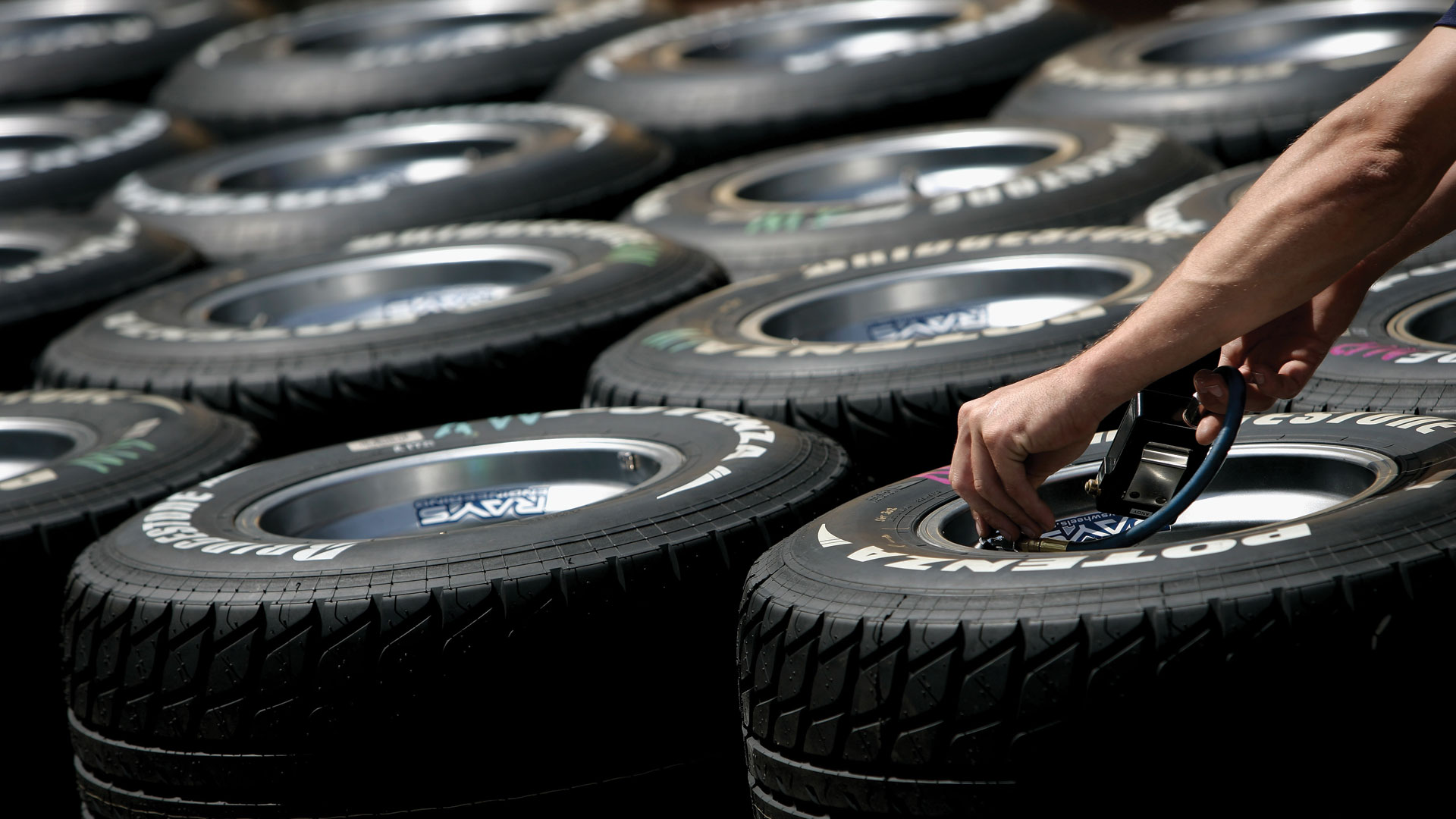

We may earn revenue from the products available on this page and participate in affiliate programs. Learn more ›
Checking your tire pressure is one of the easiest things you can do, but not many people actually do it. It doesn’t take long—all you have to do is back up to the air pump after fueling up at most any gas station. Five minutes later, you’ll be on the road again, and that tiny delay will help keep you safe, and save you money.
Ideally, you should check tire pressure once every couple of weeks, but most drivers are doing okay if they look at it once a month. But don’t be the person who waits until the tire pressure monitoring system (TPMS) light comes on (assuming your vehicle even has that; none of mine do). Here are a few reasons why you should keep tabs on those rubber balloons stuck to your car’s wheels:
SAFETY
This is the number one reason to check tire pressure. Think about it: the areas where the tires meet pavement are the only contact your vehicle actually has with the ground. When tires are over- or under-inflated, braking, handling, and steering are affected—sometimes significantly. When a tire is under-inflated, for example, its sidewalls will flex more that they should, which negatively impacts cornering and steering response, and causes the car to move erratically over bumps. Increased flex can also lead to accelerated sidewall wear, which can cause a blowout (a tire exploding at highway speeds is extremely dangerous). An over-inflated tire, on the other hand, can diminish the effectiveness of your brakes.

TIRE WEAR
Improperly inflated tires cause premature wear. Too much air and the tread will rub bald; too little and the sidewalls will flex too much, creating excess heat and eating away the tire from the inside. Tires cost a lot of money, so ideally, you want them to last as long as possible. To put things into perspective, a set of four Bridgestone Potenzas on a 2012 Toyota Camry (very common tires on a very common car) cost nearly $600—and that doesn’t include fees for installation and the disposal of those old tires. Tires for light trucks and SUVs, which Americans have bought in ever-increasing numbers over the past several years, can cost even more.

FUEL ECONOMY
Have you ever ridden a bicycle with under-inflated tires? You might remember it being more tiring that it should have been. When your car’s tires are under-inflated, the engine has to work harder to make the car move, which digs into fuel efficiency. According to the U.S. Environmental Protection Agency, fuel efficiency drops about 0.2 percent for each pound of tire pressure lost. A tire will lose about 1 psi each month on its own, and another 1 psi for every 10 degrees the temperature drops, according to Tire Rack. On the flip side, over-inflating your tires won’t increase fuel economy, but it will cause tires to wear faster.
Now that you know all the reasons why you should be checking tire pressure on a regular basis, here are a few tips on how you should go about doing it:
1. Carry a tire pressure gauge in your car. You can’t count on every gas station to have one, and sometimes they simply don’t function properly and give inaccurate readings.
2. Consult your car’s owner’s manual for recommended tire pressure. Or, if it still has one, the tire pressure information sticker that’s posted somewhere inside the driver’s door; if it’s not on the pillar near the door striker, it’s probably on the back of the door. Each vehicle is designed to operate with the tires at a certain pressure. Although the tires have a maximum pressure stamped on the sidewall, the pressure number you should go with—assuming you’re using original equipment tires—is the one on the sticker.
3. Don’t assume that the pressure for nitrogen-filled tires won’t change. Nitrogen, indicated by a green cap on the tire’s valve system, is more resistant to atmospheric pressure changes than ambient air, but it still leaks out over time. If you’re checking your tires every month (like you should), you won’t need to pay extra for nitrogen filling.
4. While you’re down there, look at your tires. Do they show signs of wear? Cracking on the sidewalls and thin tread are cause for concern. Sidewall cracks can cause blowouts and bald tread affects braking and handling on wet and loose surfaces.
